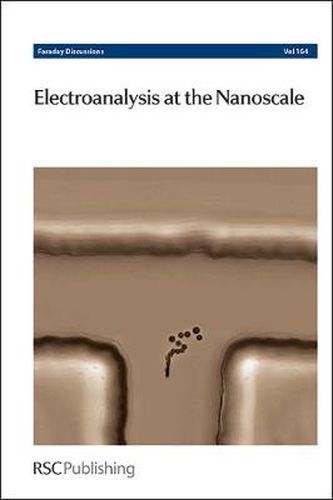Readings Newsletter
Become a Readings Member to make your shopping experience even easier.
Sign in or sign up for free!
You’re not far away from qualifying for FREE standard shipping within Australia
You’ve qualified for FREE standard shipping within Australia
The cart is loading…






The classical field of electroanalysis is emerging as a new and exciting tool in the 21st century. The characterisation, detection and theoretical behaviour of ions and electrons at the nanoscale is a growth area, of immense interest in the diverse fields of science and technology ranging from biological applications, fuel cells, surface and materials characterisation to sensing. Electrochemistry at the nanoscale is closely linked to interfacial chemistry at the solid-liquid, liquid-liquid phases, material sciences and condensed matter physics. The paradigm shift in electrochemistry started in the 1980s with development of new trends such as structured micro and nano-electrodes allowing atomic scale and dynamic investigations. Enabling in-situ techniques such as Scanning Electrochemical Microscopy combined with AFM, spectro-electrochemical methods together with advanced theoretical calculations using DFT and Monte Carlo simulations have revolutionised the field. Mention should also be made of nano-materials e.g. based on CNTs, graphene, TiO2 and other metal oxides.
$9.00 standard shipping within Australia
FREE standard shipping within Australia for orders over $100.00
Express & International shipping calculated at checkout
The classical field of electroanalysis is emerging as a new and exciting tool in the 21st century. The characterisation, detection and theoretical behaviour of ions and electrons at the nanoscale is a growth area, of immense interest in the diverse fields of science and technology ranging from biological applications, fuel cells, surface and materials characterisation to sensing. Electrochemistry at the nanoscale is closely linked to interfacial chemistry at the solid-liquid, liquid-liquid phases, material sciences and condensed matter physics. The paradigm shift in electrochemistry started in the 1980s with development of new trends such as structured micro and nano-electrodes allowing atomic scale and dynamic investigations. Enabling in-situ techniques such as Scanning Electrochemical Microscopy combined with AFM, spectro-electrochemical methods together with advanced theoretical calculations using DFT and Monte Carlo simulations have revolutionised the field. Mention should also be made of nano-materials e.g. based on CNTs, graphene, TiO2 and other metal oxides.